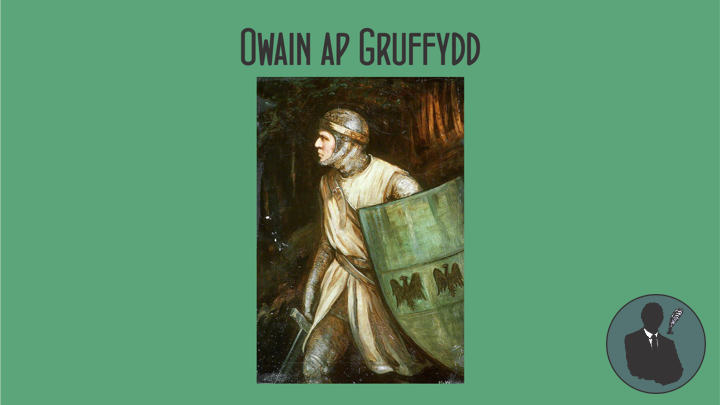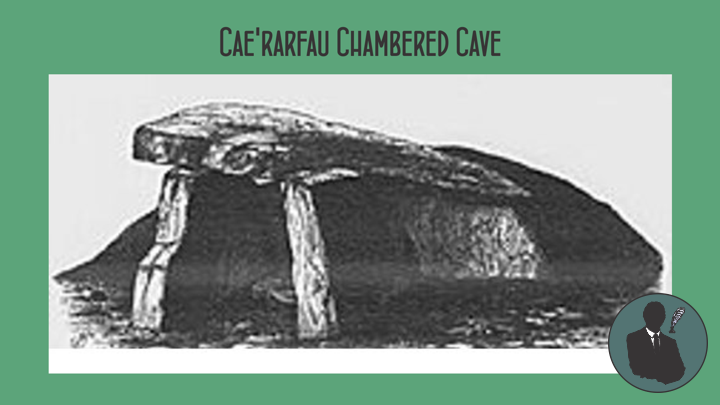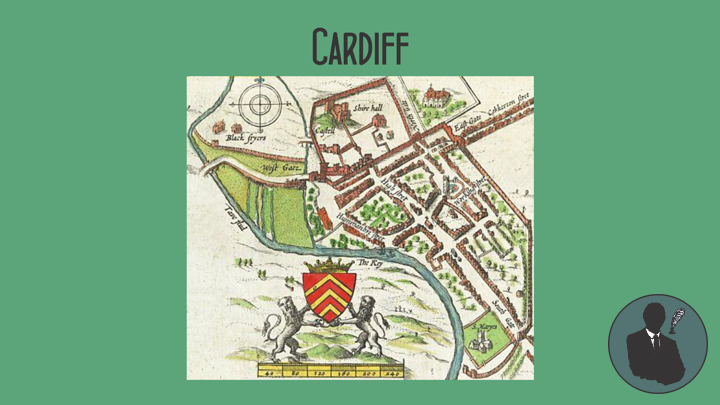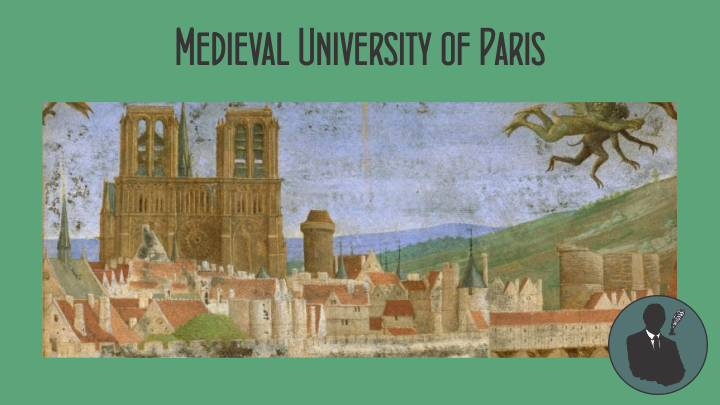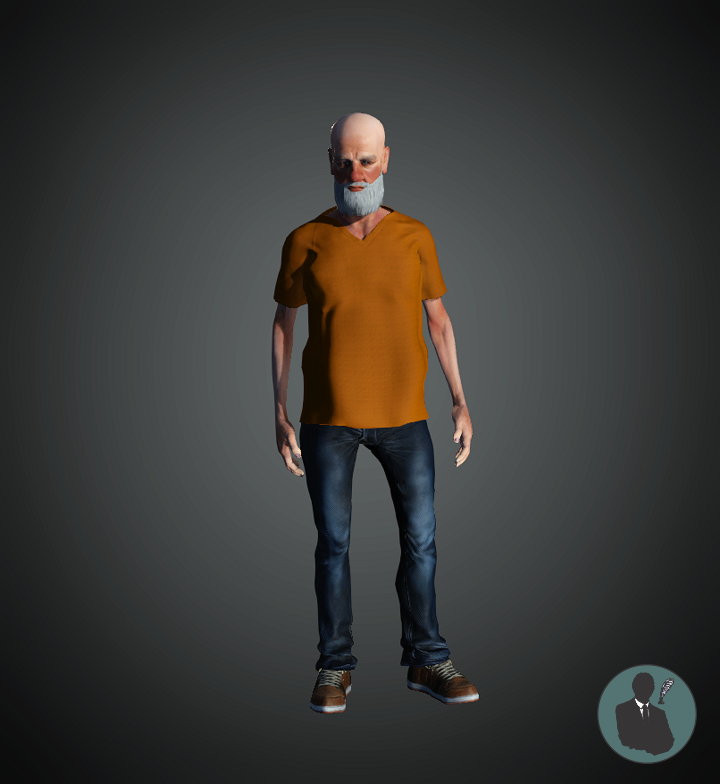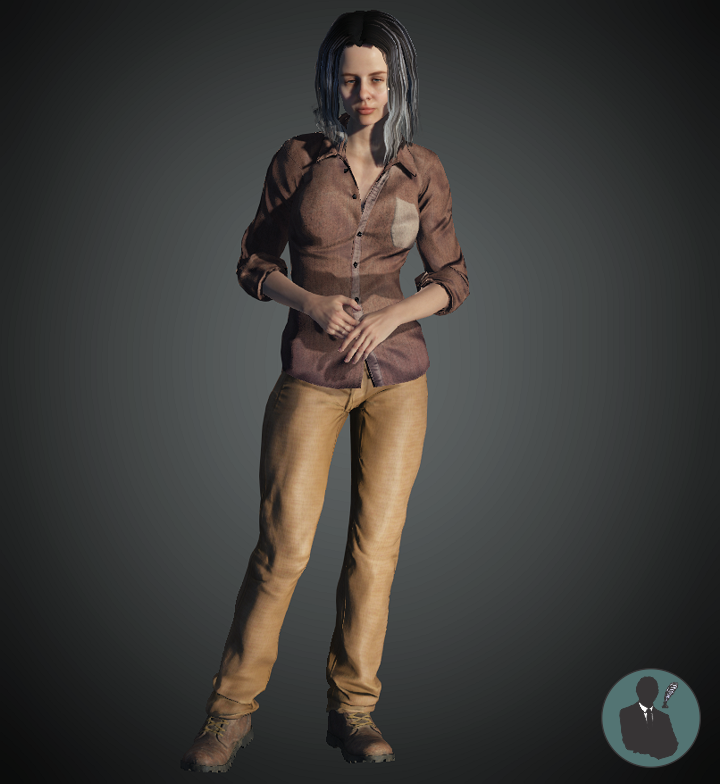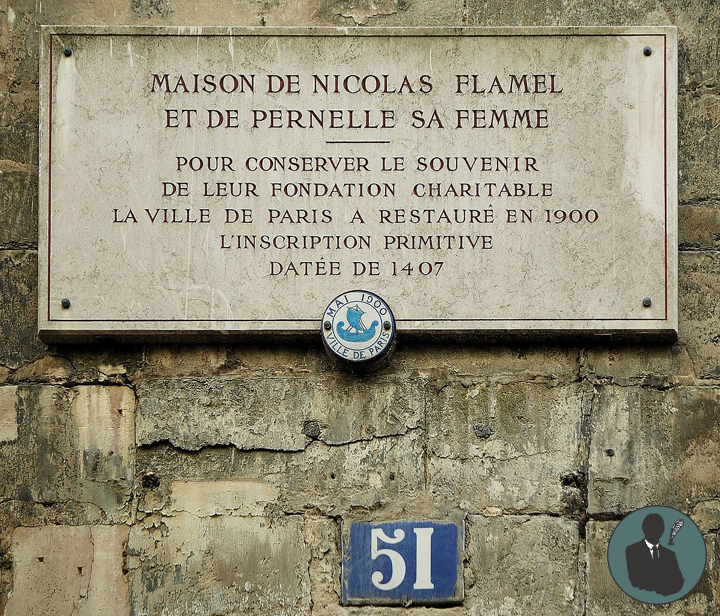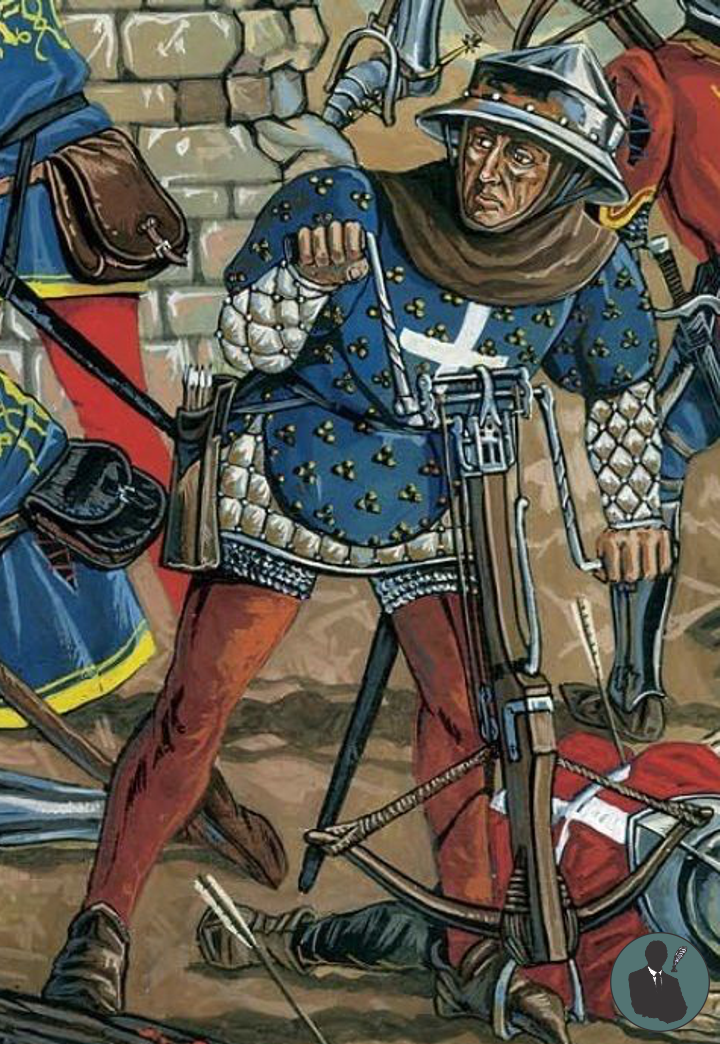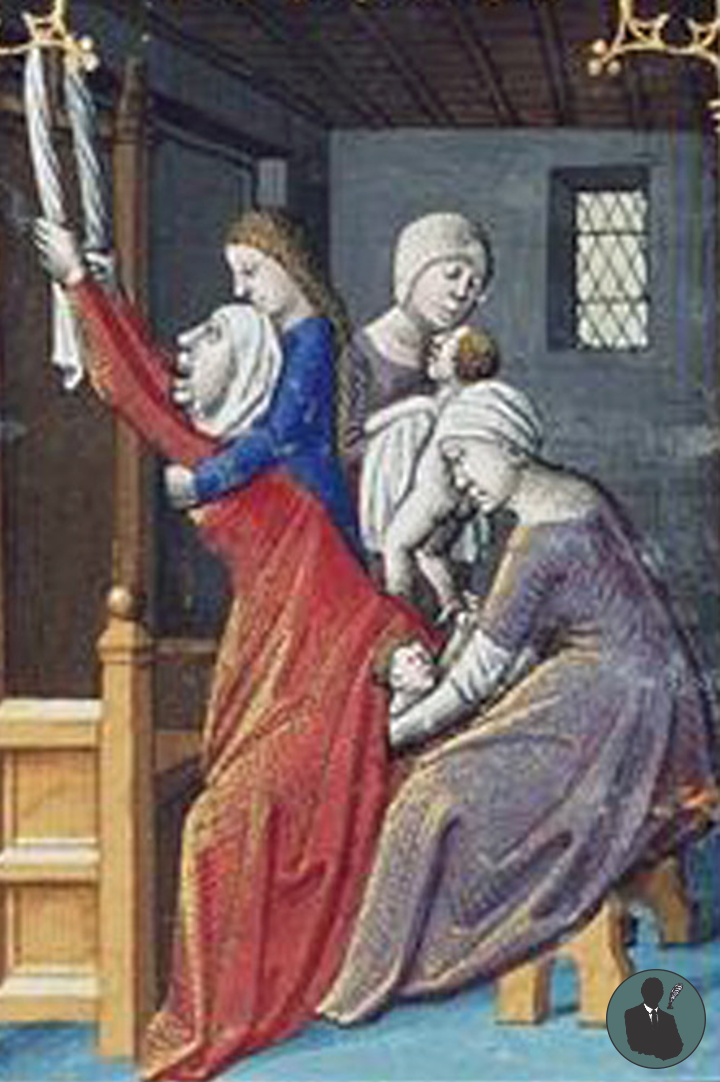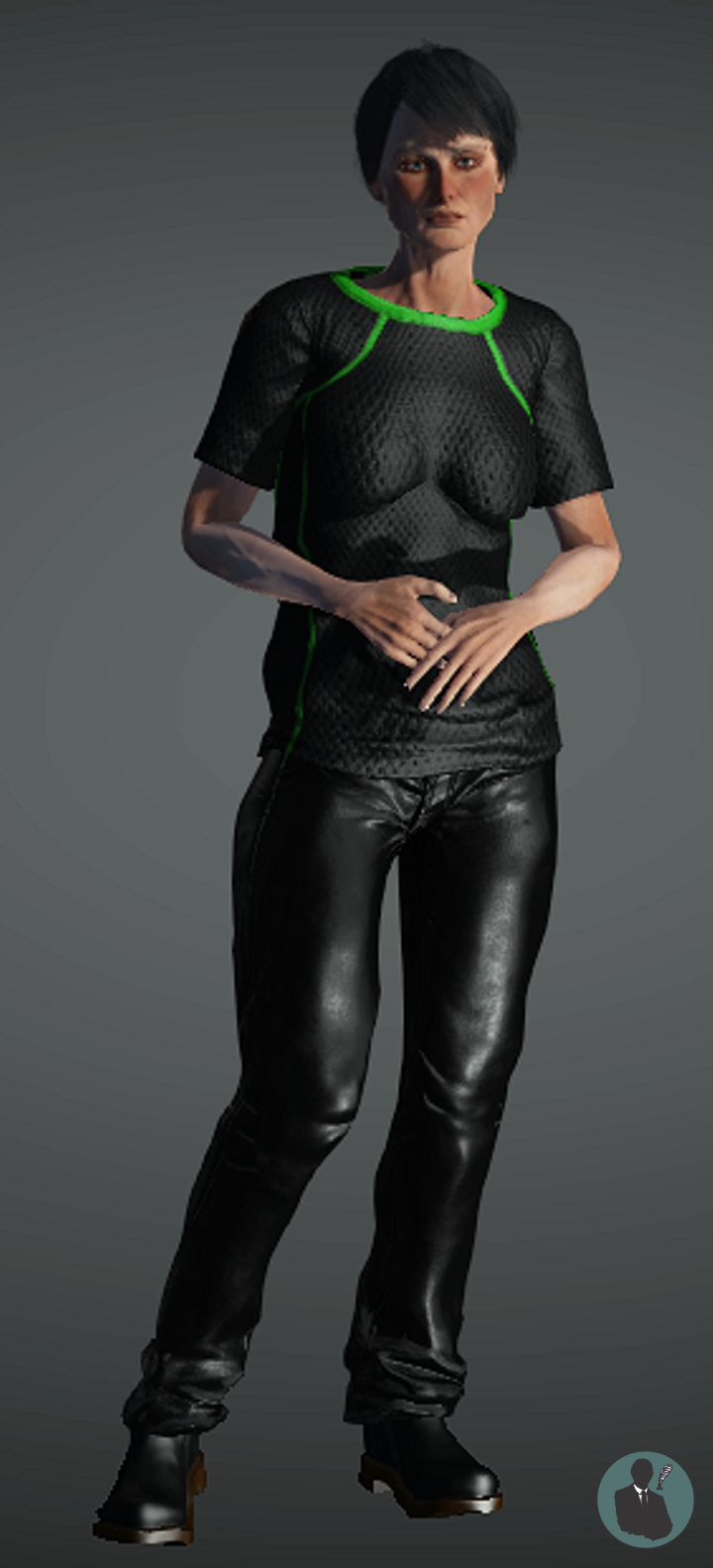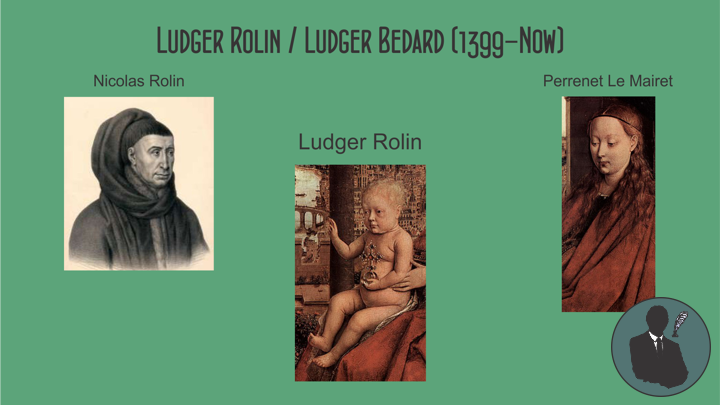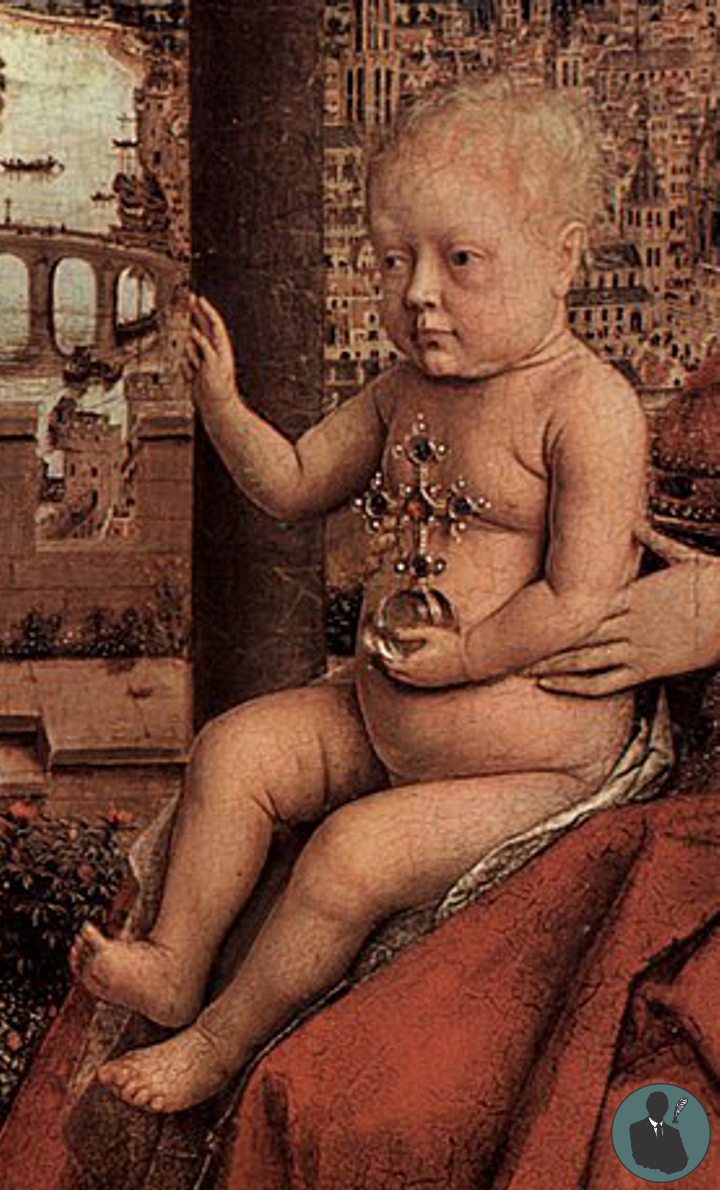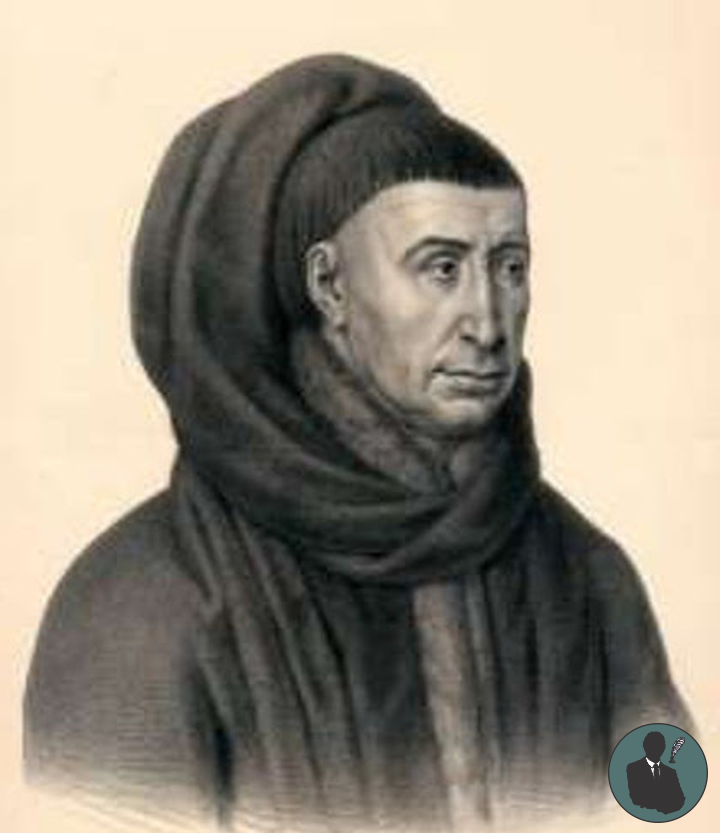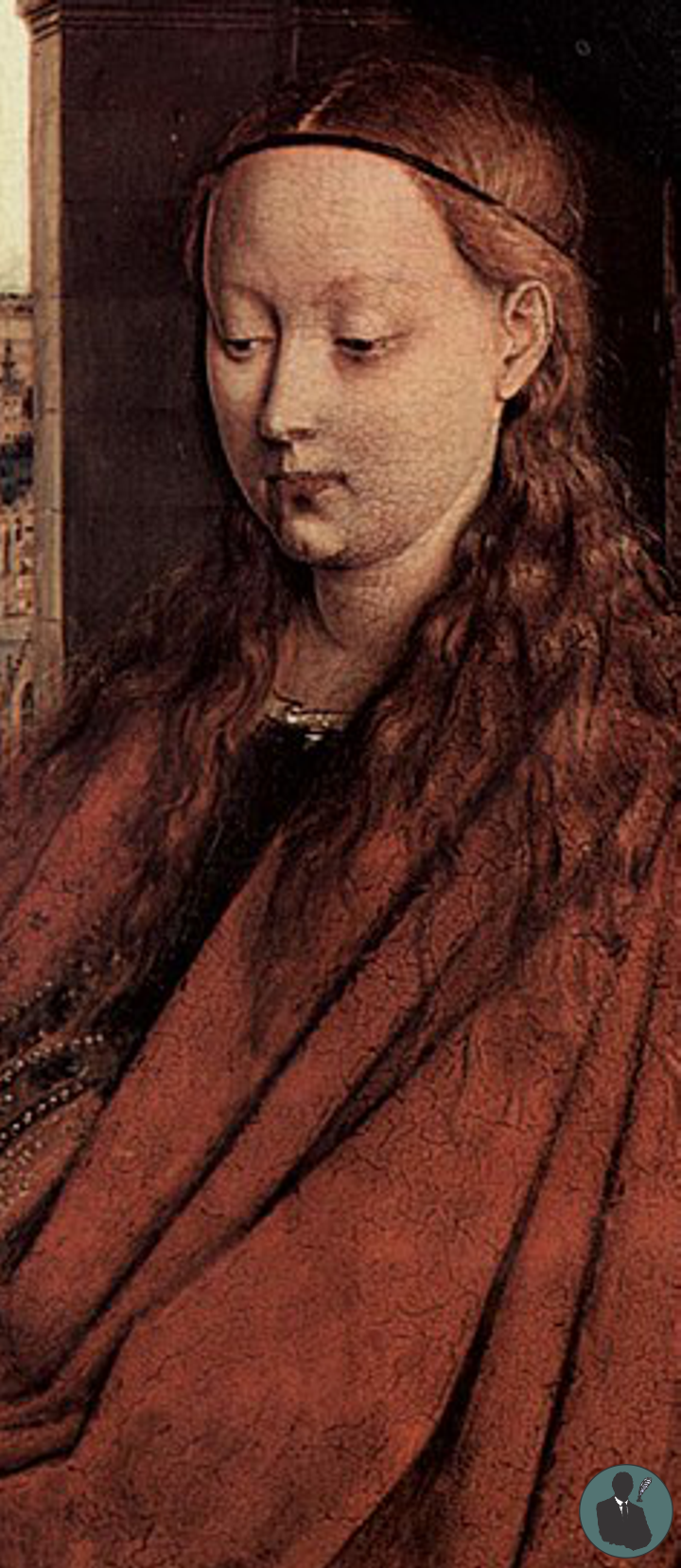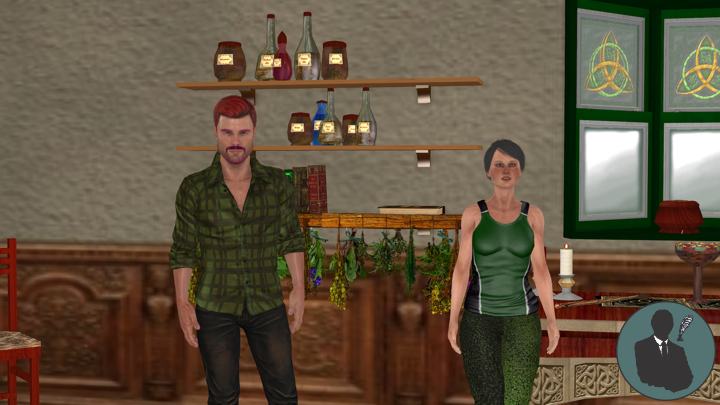Anne-Marie Bedard
——
#LudgerBedardConsultingPrivateDetective #LudgerBedard #AnneMarieBedard #NicolasFlamel #Detective #Adventurer #Occult #Paranormal #Magic #Alchemy #3DAnimation
——
——
——
——
A home laboratory in Nicolas and Ludger a two goals of alchemy: that they made the Philosopher’s Stone, which turns base metals into gold, and that he achieved immortality through the “Elixir of Life”. Ludger a laboratory technician who works in a laboratory performing procedures, maintaining equipment, assisting lead Nicolas with their work. Flamel and Ludger in 1418 created the Elixir of Life that achieved immortality.
Owain ap Gruffydd
Nicolas Flamel a true friend Owain ap Gruffydd up for him. When others try to hurt him emotionally or physically, they do everything they could to make sure he stayed safe. Owain ap Gruffydd, was a Welsh leader who instigated a fierce and long-running war of independence with the aim of ending English rule in Wales during the Late Middle Ages.
Despite the initial success of the revolution, in 1407 the superior numbers, resources and wealth that England had at its disposal eventually began to turn the tide of the war, and the much larger and better equipped English forces began to overwhelm the Welsh and eventually by 1409 they had reconquered most of Wales. Owain ap Gruffydd fought on until he was cornered and under siege at Kidwelly Castle, however he managed to escape capture by disguising himself as an elderly man, sneaking out of the castle and slipping past the English military blockade in the darkness of the night.
Owain retreated to the Welsh wilderness with a band of loyal supporters, he refused to surrender and continued the war with guerilla tactics such as launching sporadic raids and ambushes throughout Wales and the English borderlands. The last documented sighting of him was in 1412 when he ambushed the Kings men in Brecon and captured and ransomed a leading supporter of King Henry’s. He twice ignored offers of a pardon from the new King Henry V of England, and despite the large rewards offered for his capture, Owain ap Gruffydd was never betrayed to the English. The last native Welsh person to hold the title Prince of Wales. Although initially successful, the uprising was eventually defeated, but Owain disappeared and no one knows what became of him after that.
Cae’rarfau Chambered Cave
The monument comprises the remains of a chambered cave, dating to the Neolithic period. Chambered tombs were built and used by communities over long periods of time. Owain ap Gruffydd travels to a wooded valley, and there on a mound, wielding a large knightly sword he finds the keeper. In some retellings the keeper is as an ogre. The keeper is surrounded by wild animals, some magical power. The keeper ridicules Owain, but after enduring his torments, he directs the knight to travel a path out of the woods where he must climb a hill. Over the hill Owain is told he will come to a broad valley where he will find a great tree. Under the tree is a fountain and near the fountain is a marble slab to which by a chain a silver bowl is fastened. Owain is instructed to fill the bowl with water from the fountain and then wet the slab to summon a black knight upon a black steed.
Owain follows the keeper’s directions, and after wetting the marble slab, there is a peal of thunder followed by a terrible hailstorm which nearly kills both Owain and his horse. The weather then clears and birds land on the tree and sing to the knight. Owain is then approached by a figure, who accuses the knight of killing the people and animals of the land who were unable to find shelter in the supernatural hailstorm. Finally the black knight appears and attacks, beating Owain ap Gruffydd with ease, taking his horse and driving him away from the well. Owain walks back to the forest where the keeper awaits, mocking and shaming the defeated knight further. Owain ap Gruffydd returns to the Cae’rarfau Chambered Cave supplying him with a new horse for his journey home.
Paris to Cardiff
It was common to travel in heavily loaded: goods, food feed, books, laboratory, glass jars, weapons, tools, tents, clothing, money, documents, etc… Travelling was expensive: suitable and elegant clothing, tolls, tips, lodging, food, veterinaries, etc… To travel, wine was a more recommendable drink than some unsafe water. Nicolas, Perenelle, Anne-Marie and Ludger a July 1418 and Paris to Cardiff. Paris at 4 horses and 20 packhorses were used a great deal to carry sacks or baskets filled with goods, slung on either side of the horses to 7 days Saint-Malo.
Viking longships were a type of specialized used by the Viking for commerce and exploration. The ship was built with 60 pairs of oars, for a crew of 120 rowers, a rectangular sail, on a single mast and additional crew members, Nicolas, Perenelle, Anne-Marie and Ludger. Sailing used to take place when the sea was the calmest. The driving forces of the ships were rowing and sail this combined with the use of oars. At 10 days trip from Saint-Malo to Cardiff.
Cardiff from Owain ap Gruffydd to Nicolas, Perenelle, Anne-Marie and Ludger to the Cae’rarfau Chambered Cave.
Nicolas Flamel
——
#LudgerBedardConsultingPrivateDetective #LudgerBedard #AnneMarieBedard #NicolasFlamel #MedievalUniversity #Detective #Adventurer #Occult #Paranormal #Magic #Alchemy #3DAnimation
——
——
Meeting of Doctors at the University of Paris
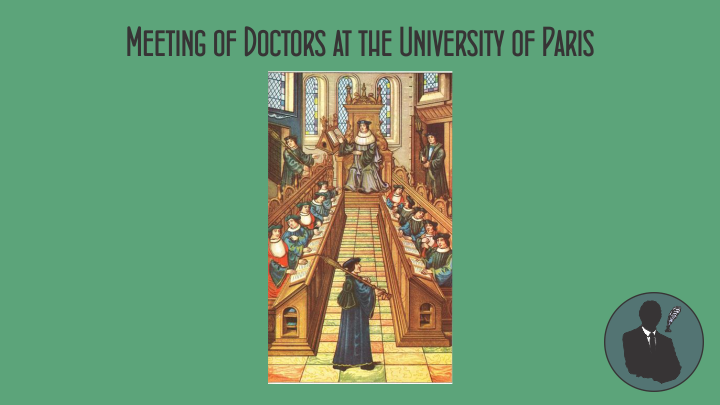
——
Descent of the Holy Ghost Upon the Faithful
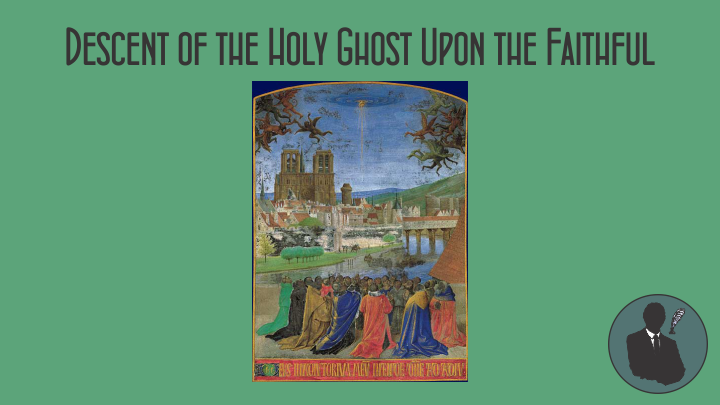
——
Anne-Marie is Ludger a polymath in knowledge covers a substantial number of subjects, known to take advantage of complex knowledge bodies to solve specific problems. Anne-Marie and Flamel is Ludger student attended the medieval university at different ages 8 if they were attending University of Paris. University Ludger studie took 3 years for a Master of Arts degree. Once a Master of Arts degree had been conferred, the Ludger student could leave the university or pursue further studies in one of the higher faculties medicine, the last one being the most prestigious Doctorate Degree.
Medieval University
A medieval university was a corporation organized during the Middle Ages for the purposes of higher education. The first Western European institutions generally considered to be universities were established in the Kingdom of Italy, the Kingdom of England, the Kingdom of France, the Kingdom of Spain, and the Kingdom of Portugal between the 11th and 15th centuries for the study of the arts and the higher disciplines of theology, law, and medicine. During the 14th century there was an increase in growth of universities and colleges around Europe.
The word universitas originally applied only to the scholastic guilds—that is, the corporation of students and masters—within the studium, and it was always modified, as universitas magistrorum, universitas scholarium, or universitas magistrorum et scholarium. Eventually, probably in the late 14th century, the term began to appear by itself to exclusively mean a self-regulating community of teachers and scholars recognized and sanctioned by civil or ecclesiastical authority.
Establishment
Among the earliest universities of this type were the University of Bologna (1088), University of Paris (1150), University of Oxford (1167), University of Modena (1175), University of Palencia (1208), University of Cambridge (1209), University of Salamanca (1218), University of Montpellier (1220), University of Padua (1222), University of Toulouse (1229), University of Orleans (1235), University of Siena (1240), University of Valladolid (1241) University of Northampton (1261), University of Coimbra (1288), University of Pisa (1343), Charles University in Prague (1348), Jagiellonian University (1364), University of Vienna (1365), Heidelberg University (1386) and the University of St Andrews (1413) begun as private corporations of teachers and their pupils.
Course of Study
University studies took six years for a Master of Arts degree. Studies for this were organized by the faculty of arts, where the seven liberal arts were taught: arithmetic, geometry, astronomy, music theory, grammar, logic, and rhetoric. All instruction was given in Latin and students were expected to converse in that language. The trivium comprised the three subjects that were taught first: grammar, logic, and rhetoric. The quadrivium consisted of arithmetic, geometry, music, and astronomy. The quadrivium was taught after the preparatory work of the trivium and would lead to the degree of Master of Arts. The curriculum came also to include the three Aristotelian philosophies: physics, metaphysics and moral philosophy.
Trivium
The trivium is the lower division of the seven liberal arts and comprises grammar, logic, and rhetoric. Grammar, logic, and rhetoric were essential to a classical education, as explained in Plato’s dialogues. The three subjects together were denoted by the word trivium during the Middle Ages, but the tradition of first learning those three subjects was established in ancient Greece.
Quadrivium
The quadrivium followed the preparatory work of the trivium, consisting of grammar, logic, and rhetoric. In turn, the quadrivium was considered the foundation for the study of philosophy and theology. The quadrivium was the upper division of the medieval education in the liberal arts, which comprised arithmetic (number in the abstract), geometry (number in space), music (number in time), and astronomy (number in space and time). Educationally, the trivium and the quadrivium imparted to the student the seven liberal arts (essential thinking skills) of classical antiquity.
Anne-Marie Bedard
——
#LudgerBedardConsultingPrivateDetective #LudgerBedard #AnneMarieBedard #NicolasFlamel #Detective #Adventurer #Occult #Paranormal #Magic #Alchemy #3DAnimation
——
——
——
——
Anne-Marie and child Ludger Bedard here is Paris. She is generally considered one of the first truly professional master chefs. From 1402 – 1407 she was in service to Charles VI. From 1407 she was in service to Nicolas Flamel.
Nicolas Flamel
Nicolas Flamel was a French scribe and manuscript-seller. In his youth in the Pyrenees Mountains of France, and it was there that he met Perenelle, his future wife. Flamel became a noted alchemist of considerable talent. At some point, he created the Philosopher’s Stone, an item of immense magical power. With the Stone, he created the Elixir of Life, a potion that made the drinker functionally immortal as long as it was regularly ingested. He and Perenelle regularly used the potion after that time.
Flamel spent 21 years trying to decipher it all. When Paris couldn’t provide answers, he set off to Spain to find a Jewish scholar and came across Maestro Canches, a learned Jewish man living in Leon. Canches recognised Abraham the Jew as one of the earliest masters of the Jewish mystical tradition of Kabbalah and translated the few pages Flamel had with him before agreeing to travel back to France and translate the rest. Unfortunately, he fell ill on the journey and died before they reached Paris.
He ran two shops as a scribe and married Perenelle in 1368. She brought the wealth of two previous husbands to the marriage. The French Catholic couple owned several properties and contributed financially to churches, sometimes by commissioning sculptures. Later in life, they were noted for their wealth and philanthropy.
Perenelle Flamel (1320 – Now)
Perenelle Flamel was the wife of the famous 14th-century scribe Nicolas Flamel. Perenelle’s reputation as an alchemist stems from a book written in 1612, allegedly authored by her husband. However, Nicolas’ reputation as an author and immortal alchemical. Perenelle figures prominently in the introduction of this Booke of Hieroglyphicall Figures, where the character of Nicolas outlines his quest for the philosopher’s stone. In this story, Perenelle witnesses alchemical projections and aids in chrysopoeia.
House in Paris
One of Flamel’s houses still stands in Paris, at 51 rue de Montmorency. It is the oldest stone house in the city. There is an old inscription on the wall, which states, “We, plowmen and women living at the porch of this house, built in 1407, are requested to say every day an ‘Our Father’ and an ‘Ave Maria’ praying God that His grace forgive poor and dead sinners.”
Philosopher’s Stone
The philosopher’s stone, more properly philosophers’ stone or stone of the philosophers, is a mythical alchemical substance capable of turning base metals such as mercury into gold or silver. It is also called the elixir of life, useful for rejuvenation and for achieving immortality; for many centuries, it was the most sought goal in alchemy. The philosophers’ stone was the central symbol of the mystical terminology of alchemy, symbolizing perfection at its finest, enlightenment, and heavenly bliss.
Anne-Marie Bedard
——
#LudgerBedardConsultingPrivateDetective #LudgerBedard #AnneMarieBedard #Detective #Adventurer #Occult #Paranormal #Magic #Alchemy #3DAnimation
——
Abraham Bedard
——
Guillemette Le Clerc
——
Anne-Marie Bedard
——
Anne-Marie Bedard as born in 1357 in Beaune, Burgundy, France. The daughter of Abraham Bedard and Guillemette Le Clerc, she was the thirteen of their thirteen children. Father Abraham Bedard is French soldiers. Guillemette Le Clerc changing views of medicine caused the women’s role as midwife to be pushed aside as the professionalization of medical practitioners began to go up.
Monks and monasteries of the Roman Catholic Church have had an important influence on the history of Burgundy wine. While single women both lived without a spouse at some point in their lives, their lifestyles were very different and widows were often awarded more freedoms and opportunities. If a woman living did not marry in her teens, she was often expected to join a nunnery.
Le Tart Abbey, was the nunnery of the Cistercian. It was located of Tart-l’Abbaye in Burgundy the Cistercian mother house. Thanks to its support from the upper echelons of society, if not to more popular appeal, the abbey received sufficient endowments to ensure its financial stability through the difficult times to come. Its lands included several vineyards, and the sale of wine was a significant element in the abbey’s economy: five hectares of the Vignoble de Bourgogne, others located at Beaune, Chambolle-Musigny, Morey-Saint-Denis, Chézeaux and Vosne-Romanée.
Abbesses Cistercian are major superiors according to canon law, the equivalents of abbots or bishops. They receive the vows of the nuns of the abbey; they may admit candidates to their order’s novitiate; they may send them to study; and they may send them to do pastoral or missionary, or to work or assist—to the extent allowed by canon and civil law—in the administration and ministry of a parish or diocese. They have full authority in its administration. They may not administer the sacraments, whose celebration is reserved to bishops, priests, namely, those in Holy Orders.
Abbesses Cistercian, Anne-Marie Bedard apprenticeships within these trades were difficult to acquire and were not given formal representation in official records. If a woman was lucky enough to acquire such an opportunity to advance professionally within the trade. The economic difficulties that guilds imposed on unmarried women led many to enter the retail industry.
Anne-Marie Bedard is an important figure in the early history of French cuisine. She was cook to the Nicolas Rolin. His first position was enfant de cuisine to Abbesses Cistercian. From 1372 she was queux, head chef. In 1382 she became squire to the Nicolas Rolin. He is generally considered one of the first truly “professional” master chefs.
She expanded a collection of recipes as Anne-Marie Bedard, a famous book on cookery and cookery technique, thought to be one of the first professional treatises written in France and upon which the French gastronomic tradition was founded. It had an inestimable influence on subsequent books on French cuisine and is important to food historians as a detailed source on the medieval cuisine of northern France.
Anne-Marie Bedard
——
#LudgerBedardConsultingPrivateDetective #LudgerBedard #AnneMarieBedard #LudgerRolin #NicolasRolin #PerrenetLeMairet #Detective #Adventurer #Occult #Paranormal #Magic #Alchemy #3DAnimation
——
Ludger Rolin / Ludger Bedard (1399-Now)
——
Ludger Rolin
——
Nicolas Rolin
——
Perrenet Le Mairet
——
Ludger Bedard and Mom Anne-Marie Bedard
——
Nicolas Rolin also inherited his family’s home in Autun on the Rue de Bancs, which, throughout his long life, remained his primary residence. Anne-Marie Bedard a chef de cuisine is a chef that leads and manages the kitchen and chefs of a Nicolas Rolin. The chef de cuisine is in charge of all activities related to the kitchen, which usually includes creating menus, managing kitchen staff, ordering and purchasing stock and equipment, plating design, enforces nutrition, safety, and sanitation, and ensuring the quality of the meals that are served.
Ludger Rolin as born in 1399 in Autun, Burgundy, France. Ludger, “Enfant Terrible” is a French expression, traditionally referring to a child who is terrifyingly candid by saying embarrassing things to parents or others. Nicolas Rolin and Ludger Rolin to represent the interests of children in cases where the child’s wishes differ from those of either parent. Important burgher of Autun, after practice as lawyer in the Parliament of Paris.
However, the expression has drawn multiple usage in careers of science, art, fashion, music, and other creative arts. In these careers, it implies a successful “genius” who is very unorthodox, striking, and in some cases, offensive, rebellious, usually young and successful person who is strikingly unorthodox, innovative, or avant-garde.
Anne-Marie and child Ludger Bedard a legal guardian in 1401 a person who has the legal authority, and the corresponding duty, to care for the personal and property interests of another person, called a ward. The term in “loco parentis” refers to the legal responsibility of a person to take on some of the functions and responsibilities of a parent. Anne-Marie and child Ludger Bedard here is Paris.
An avid reader from before the time he started formally in school, he has had a lifelong interest in learning. He has always said:
“If you go to bed at night without learning something new that day, your day is not complete.”
Ludger Bedard (1411)
The quintessential “Renaissance Man”, Ludger has always had deep passions for a wide variety of interest for as long as he can remember. He is self-learned on a wide variety of topics, and has developed a series of learning and creative techniques to assist him.
Polymath
A polymath is an individual whose knowledge spans a substantial number of subjects, known to draw on complex bodies of knowledge to solve specific problems. Embodying a basic tenet of Renaissance humanism that humans are limitless in their capacity for development, the concept led to the notion that people should embrace all knowledge and develop their capacities as fully as possible. This is expressed in the term Renaissance man, often applied to the gifted people of that age who sought to develop their abilities in all areas of accomplishment: intellectual, artistic, social, physical, and spiritual.
To have encyclopedic knowledge is to have “vast and complete” knowledge about a large number of diverse subjects. A person having such knowledge is called a human encyclopedia or a walking encyclopedia. The concept of encyclopedic knowledge was once attributed to exceptionally well-read or knowledgeable persons such as Plato, Aristotle, Hildegard von Bingen, Leonardo da Vinci, Immanuel Kant, or G. W. F. Hegel. Tom Rockmore described Hegel, for example, as a polymath and “a modern Aristotle, perhaps the last person to know everything of value that was known during his lifetime.” Such persons are generally described as such based on their deep cognitive grasp of multiple and diverse fields of inquiry—an intellectually exceptional subset of philosophers who might also be differentiated from the multi-talented, the genius, or the “Renaissance man.”
Ludger Bedard Detective
